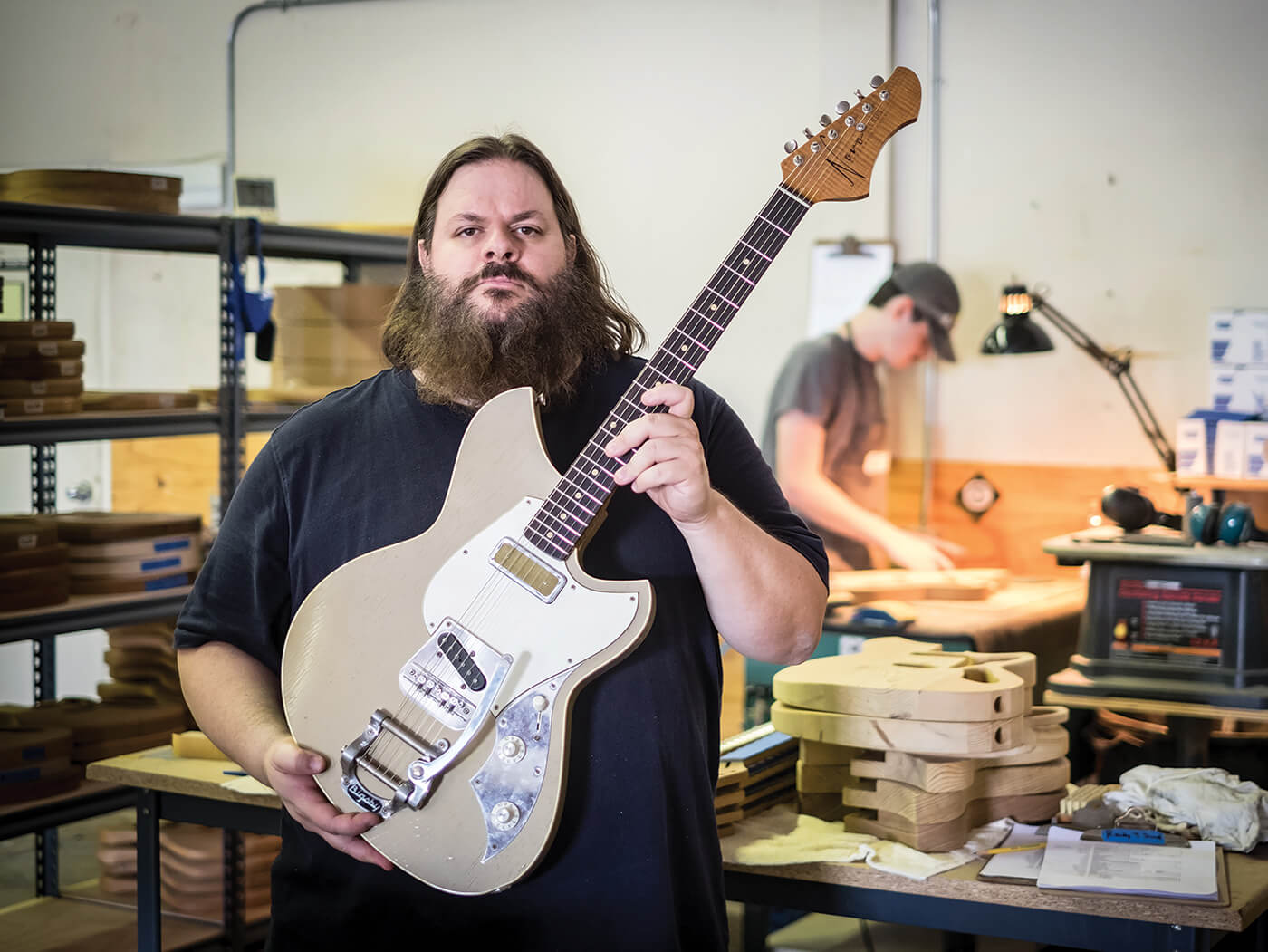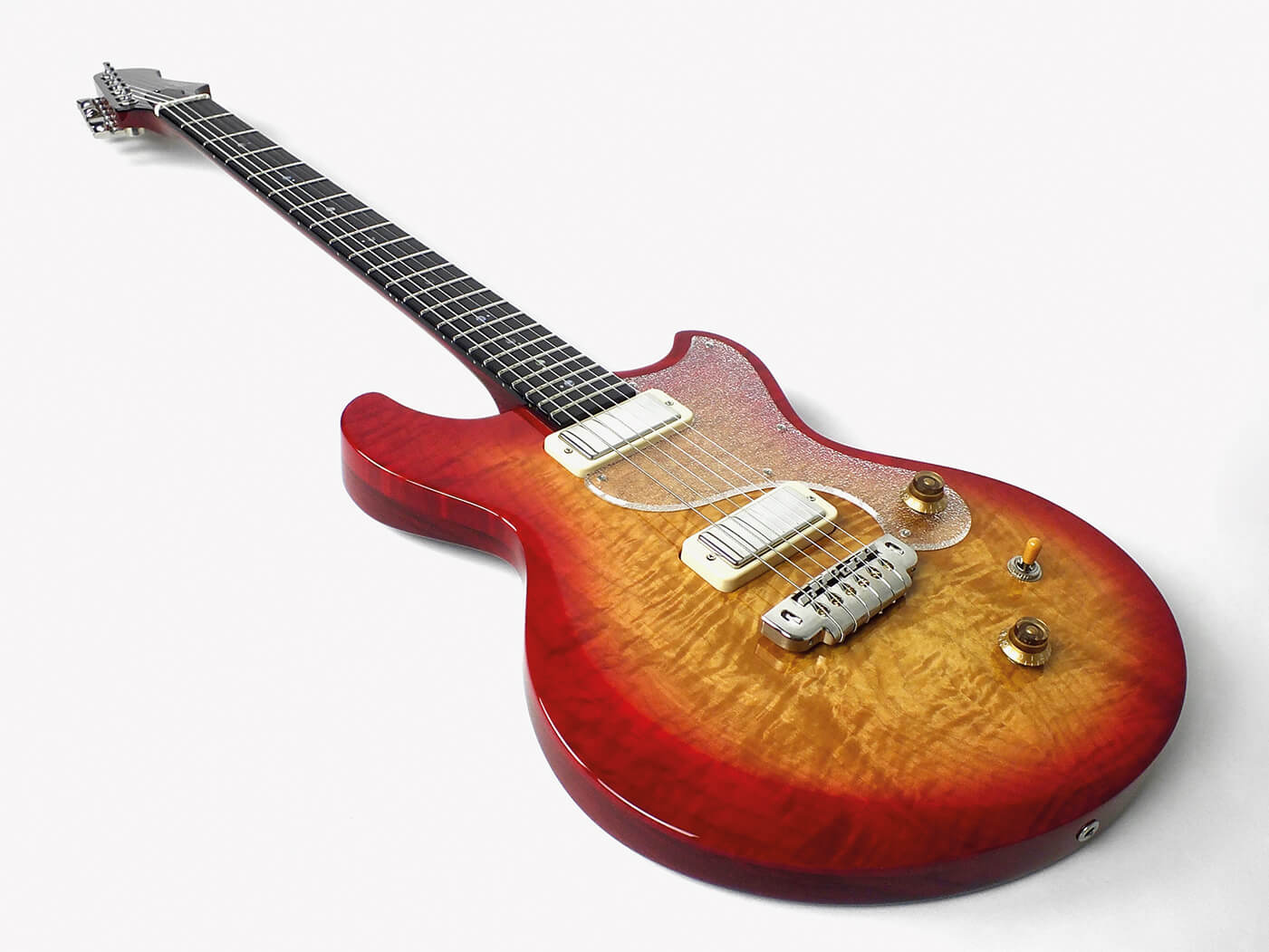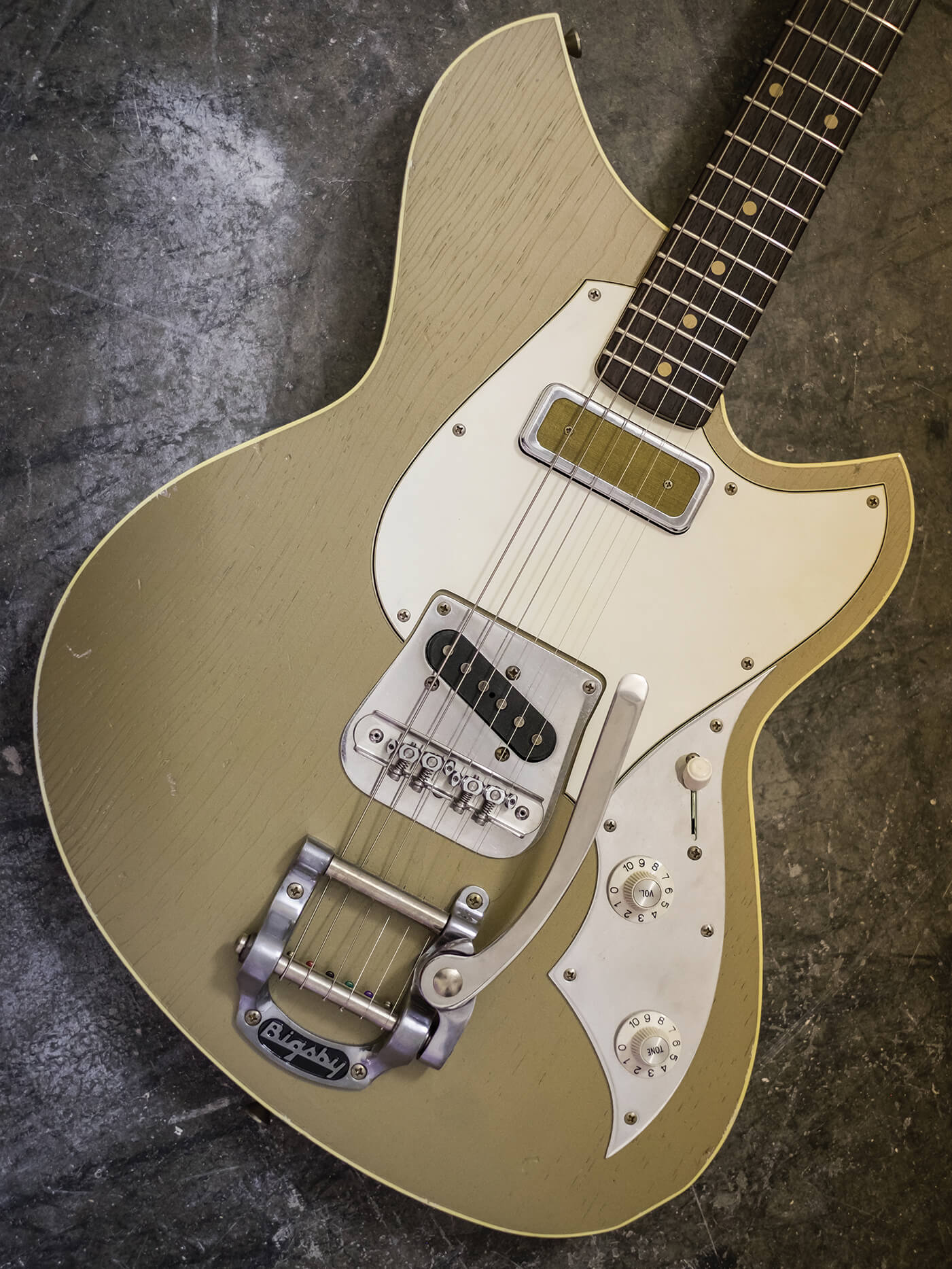Related Tags
Interview: Dennis Fano of Novo Guitars is mad about offsets
Whether they’ve had Fano, Novo or Rivolta on the headstock, Dennis Fano’s guitars have long betrayed a love-affair with offset-body designs. We spoke to the Nashville-based luthier to find out why…

Dennis Fano with a Serus T in Novo’s Nashville workshop
Although he’s responsible for some of the coolest electric guitar designs on the planet, Dennis Fano started out playing bass, and his first experience of an offset-body Fender was thanks to a love of British rock behemoths Led Zeppelin.
“The first offset that I ever encountered was actually my ’66 Jazz Bass,” the luthier remembers. “I was – and still am – a big Zeppelin fan. One of the first bands that I was in was a Zep cover band so, naturally, I had to have a Jazz Bass.”
By the mid 1990s, Dennis was working as a tech in Matt Umanov Guitars in New York. “The first offset guitar that I ever worked on was probably a 60s Jaguar or Jazzmaster, when I was doing repair work at Matt Umanov Guitars in Greenwich Village,” he reveals. “Offset bodies have always appealed to me more than traditional shapes. They’re sleek and sexy, but the ergonomics of the offset are the real draw. [Played] seated or standing, offsets balance better than traditional designs.”

From the moment Dennis started working on his own electric-guitar designs, offsets were hugely influential. “My first original design, the Fano Satellite, had a single-cut offset body,” he recalls. “I started building those back in ’95. The early pre-Alt de Facto Fano designs were all offsets. Six of the nine Alt de Facto designs were offsets. Every guitar that we’re currently building at Novo is an offset. All of the models that I’ve designed for Rivolta Guitars are offsets. In fact, I’ve got a trio of new Novo models and a couple for Rivolta on the drawing board and yep, they’re all offsets! [laughs]”
Although offset guitars have traditionally been favoured by experimentalists, we wonder if the way in which they’ve been embraced by the Instagram generation means that they are almost in danger of becoming too mainstream. Is there a possibility that the coolest guitars on the block might soon become so ubiquitous that they lose their outsider appeal? Should boutique builders be casting the net wider for inspiration?
“The offset is having its moment in the sun,” Dennis acknowledges. “I think the introduction of the Mastery Bridge and Vibrato has had a lot to do with that. It’s that good, so a lot of builders are taking a traditional approach with their offset builds. I’ve always viewed the [Novo] Serus design as a platform or a jumping-off point. Its large, offset body actually adapts really well to a wide variety of configurations and playing styles. We offer a Serus with Mastery hardware, but one of our most popular models has a Tele bridge and a P-90 pickup in the neck position.”

Anyone who follows @novoguitars on Instagram will have seen how the Serus body shape is a flexible platform for customisation. We wonder if using a wrapover or tune-o-matic bridge with a bolt-on neck requires a different neck angle to a Mastery unit?
“We machine our neck pockets at a slight angle when we use those taller bridges,” says Dennis. “In fact, we use the same neck angle for all three of them. That raises the Mastery slightly higher than you’ll see on most other offsets, but the increased break angle helps to tame sympathetic overtones.”
Check out our demo of the Novo Mirus J here:
For more on Novo Guitars, visit coda-music.com and novoguitars.com.
